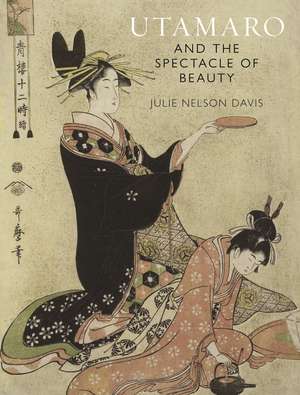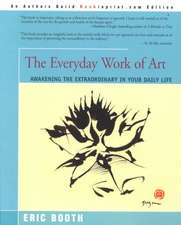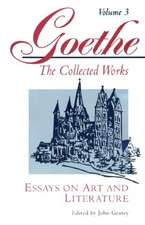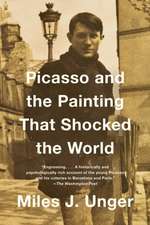Utamaro and the Spectacle of Beauty
Autor Julie Nelson Davisen Limba Engleză Paperback – 10 feb 2021
In this new expanded edition, Julie Nelson Davis draws on a wide range of period sources, makes a close study of selected print sets, and reinterprets Utamaro in the context of his times. Reconstructing the place of the ukiyo-e artist within the commercial print market, she demonstrates how Utamaro’s images participated in a larger spectacle of beauty in the city of Edo (present-day Tokyo).
Preț: 191.61 lei
Preț vechi: 230.93 lei
-17% Nou
Puncte Express: 287
Preț estimativ în valută:
36.66€ • 38.28$ • 30.34£
36.66€ • 38.28$ • 30.34£
Carte disponibilă
Livrare economică 15-22 martie
Livrare express 01-07 martie pentru 66.89 lei
Preluare comenzi: 021 569.72.76
Specificații
ISBN-13: 9781789142358
ISBN-10: 1789142350
Pagini: 296
Ilustrații: 66 color plates, 48 halftones
Dimensiuni: 191 x 248 x 23 mm
Greutate: 0.46 kg
Ediția:Second Edition, Revised and Expanded Edi
Editura: REAKTION BOOKS
Colecția Reaktion Books
ISBN-10: 1789142350
Pagini: 296
Ilustrații: 66 color plates, 48 halftones
Dimensiuni: 191 x 248 x 23 mm
Greutate: 0.46 kg
Ediția:Second Edition, Revised and Expanded Edi
Editura: REAKTION BOOKS
Colecția Reaktion Books
Notă biografică
Julie Nelson Davis is associate professor of East Asian art in the Department of the History of Art at the University of Pennsylvania.
Cuprins
Introduction: Utamaro, Ukiyo-e and the City of Prints
1 Constructing the Artist Known as Utamaro
2 ‘Pictures of Beauties’ and Other Social Physiognomies
3 Behind the Brocade and Other Yoshiwara Illusions
4 Utamaro and the Feminine Spectacle
5 Making History into the Pageant of the Floating World
References
Works Cited
Acknowledgements
List of Illustrations
Index
1 Constructing the Artist Known as Utamaro
2 ‘Pictures of Beauties’ and Other Social Physiognomies
3 Behind the Brocade and Other Yoshiwara Illusions
4 Utamaro and the Feminine Spectacle
5 Making History into the Pageant of the Floating World
References
Works Cited
Acknowledgements
List of Illustrations
Index
Recenzii
“By offering [a] new approach to the constructions of identity, to the roles of gender, sexuality and celebrity in the Edo period, Davis here makes a significant contribution to the field in showing us the constructed nature of the spectacle of beauty . . . her publishers have done her proud. Reaktion Books are always beautifully designed and this one, with its full-color illustrations from all the Utamaro series, its art paper and its elegant binding is one of the best.”
“This beautifully illustrated volume presents an engaging argument which will be of interest to a readership with prior knowledge of Edo art history.”
“Davis provides a succinct and credible overview of Utamaro's career, one devoid of the romanticized drama found in most treatments of this artist . . . Drawing on the research of Edo culture specialists, Davis treats the reader to a series of interesting and informative essays on such topics as the publishing industry, the Tenmei-era gesaku community, the history of the Yoshiwara and its protocols, the pseudoscience of physiognomy, and the Kansei reforms.”
“Handsomely produced and copiously illustrated. . . . Davis has written a book that skillfully synthesizes a broad range of historical, cultural and artistic data that underscore the degree to which the conventional understanding of the floating world artist is an illusion constructed with the collusion of the viewer. General reader and scholars alike will appreciate her careful analyses of the multi-layered visual and verbal meanings of Utamaro's most familiar print series.”
“Utamaro and the Spectacle of Beauty makes a significant contribution to the field of ukiyo-e studies by aptly showing that past readings of Utamaro as one au fait with the life of women has limited our understanding of the complexity of social factors that led to such a construct. By approaching her reading of the Utamaro style as the concept of a publishing industry geared to catering to the needs of the market, Davis opens up a broader reading of his work that reveals much about cultural and societal attitudes, particularly those related to the perception of women in the male-dominated Edo society.”














